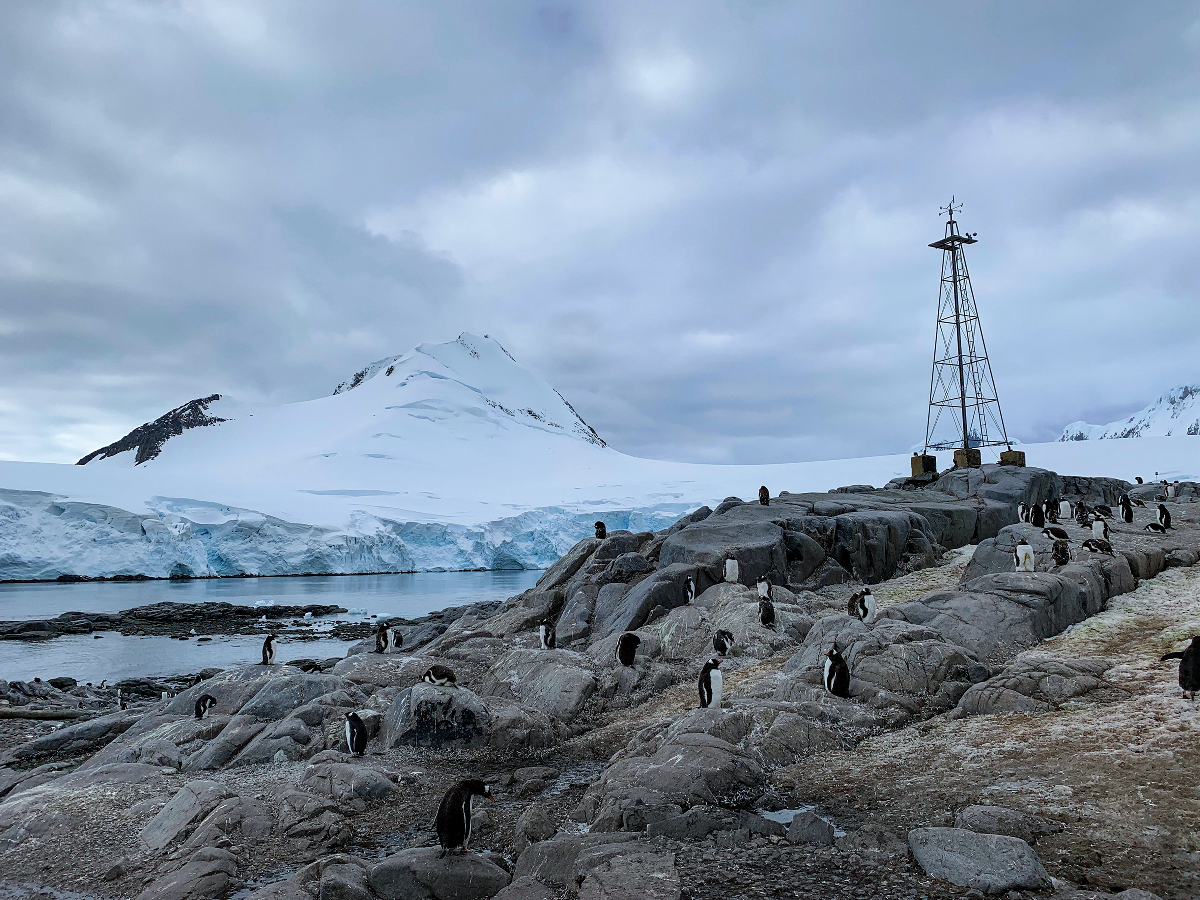Scientists have observed that ammonia in penguin guano is directly related to cloud formation in Antarctica. Gaseous ammonia reacts with gaseous sulfur compounds in the Antarctic atmosphere to form aerosols, providing a surface for water vapor to condense on, thus forming clouds. This process, they hypothesize, could be playing a role in climate change in the region, as clouds act as an insulating layer, slowing a rise in surface temperatures as well as the rate of loss of ocean ice coverage (Commun. Earth Environ. 2025, DOI: 10.1038/s43247-025-02312-2).
In the experiment, the researchers measured ammonia concentration in the air near Marambio Base in Antarctica. They found that when wind blew from the direction of a 60,000-strong Adélie penguin colony about 8 km away, the amount of ammonia grew to 13.5 parts per billion, an increase of more than 1,000 times its baseline value of 10.5 parts per trillion. Even when the penguins migrated away from the site, ammonia concentrations remained high—over 100 times as high—because of guano left behind.
Study coauthor Matthew Boyer, an earth system researcher at the University of Helsinki, explains that sulfur compounds from microbial activity in the ocean give off dimethyl sulfide gas. This in turn is oxidized in the atmosphere to form sulfuric acid, whose molecules stick together to form aerosols. The concentration of ammonia enhances the rate at which aerosols form, which then has a substantial impact on cloud formation, the researchers found.
The findings, the authors say, demonstrate key relationships between the ecosystem and climate processes in Antarctica and emphasize the importance of protecting seabird habitats. But Boyer is cautious when it comes to claims on climate change processes. “We have evidence that penguins are influencing clouds, but to know specifically the climate impacts of these clouds is quite challenging,” he says.
This uncertainty is due to the presence of ice-covered surfaces in Antarctica. Generally, clouds are reflective, and they have a cooling effect, but so does ice, he says. In fact, ice and snow surfaces are brighter and more reflective than clouds themselves. “[So] if you have clouds forming over an ice surface, they might not be contributing to cooling anymore; [they] could be contributing to warming,” Boyer says.
Arshad Arjunan Nair, a multi-disciplinary researcher at the University at Albany who wasn’t involved in the study, says that though these dynamics have been modeled before, this is the first direct, solid evidence that penguin waste is a major source of ammonia in coastal Antarctica. “The findings highlight how penguins, seabirds, and even tiny ocean microbes can play a surprising role in shaping the coastal Antarctic atmosphere,” he says. Penguins are also usually seen as climate victims, he adds, and this study demonstrates that they can be climate actors—not just affected by climate change but also shaping it.
In the future, Boyer would like to study the connection between aerosol cloud processes and their radiative impact in Antarctica, “to actually put a number on, to say, OK, is it cooling or warming the planet.”
